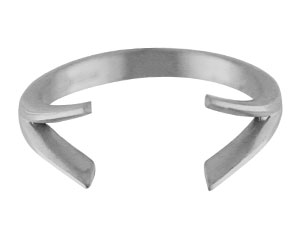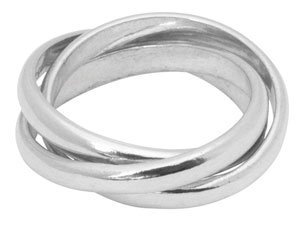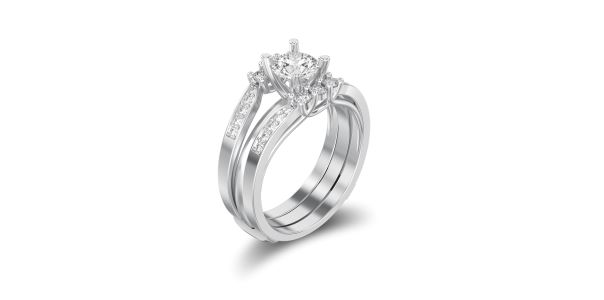What is a ring shank?
A ring shank is quite simply the band of the ring. They are often categorised by their appearance. Below are some of the most commonly seen types of ring shanks, and some of the more unusual ones too.
Other ring elements you’ll need to know:
- Head (AKA setting) – This is where the stone sits.
- Shoulders – This is the section of the ring shank that leads up to and supports the head.
- Prong – This is a specific type of stone setting which features anywhere between 4 and 6 prongs that hold the stone in place.
- Profile – This can be clearly visualised when thinking about a cross-section of the ring shank. For example, if you were to cut the ring shank in two you may find that it is d-shaped or flat edged. You’ll hear terminology such as ‘comfort fit’. This is a ring profile that has been shaped to fit the curves of the finger more naturally.
Want to know more about popular types of engagement ring styles and settings? Take a look at our guide to different types of engagement ring styles and read more about the varied types of engagement ring your customers might like.
1. Straight ring shank

A straight ring shank is just as it sounds. The band of the ring is straight and doesn’t taper off or split. When you’re learning how to create rings, this will probably be the first type of ring shank you will make due to its simple construction. Straight ring shanks are most commonly flat edged. This means that the edges of the ring shank are not rounded off. Instead, they’re formed with a rectangular strip of metal, leaving you with flat edges all the way around the band. When the edges of a ring shank are rounded off, it is often referred to as a ‘comfort fit’, as it more naturally fits the circumference of the finger.
2. Tapered ring shank

A tapered ring shank is when the band tapers off to a thinner section, either where the stone is set or in the opposite direction from where the stone is set. When the band tapers off to a thinner section on both sides of the stone, it can make the stone look larger and make the band itself look much more delicate.
3. Cathedral ring shank

A cathedral ring shank is when the stone at the centre is framed by two arches. The two ends of the ring shank are lifted to create these two arches just below the stone. It’s almost as if the two arches are supporting the stone setting, mimicking the grand architecture of cathedrals. It can make the stone much more prominent.
4. Split ring shank
A split ring shank is a much more complex design as the band splits into two before it meets the stone at the top of the band. This can give the illusion of two bands and can be as subtle or as prominent as the customer would like. The split ring shank design can also be modified so that as the band splits off in two.

5. Bypass ring shank

With a bypass ring shank, the two ends of the band will not uniformly meet the stone. Instead, each end of the band will run around the stone, almost as if it’s bypassing it. This creates the illusion that the band is flowing around or overlapping the stone.
6. Knife-edge ring shank

A knife-edge ring shank is named so because of its sharp edge that runs along the outer edge. Of course, it’s not razor sharp, but it adds a different look to a ring.
7. Interlocked ring shank
An interlocked ring shank is when the engagement ring and the wedding band interlock together perfectly. This can be interpreted in many ways by different jewellers. It may be that one jeweller creates the engagement ring to fit inside the wedding band or it may be that the two bands follow the same silhouette so that they sit alongside each other perfectly when worn.

Whether you plan on creating your own ring shanks from scratch or picking up pre-made ring shanks ready for stone setting, we have everything you need at Cooksongold. Take a look at our ring shank and cast rings range.

Cooksongold

